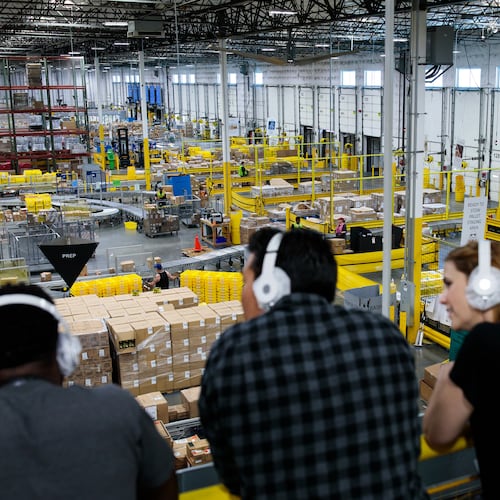In last week’s column, I discussed follow-up calls and potential scripts for job seekers to use when trying to connect with employers or networking contacts. Since the secret to a good job search is consistent and persistent follow-up, it’s worth some time to think about what you will say when you call someone.
To review, those scripts have two main elements: a purpose and a three-part formula. The purpose depends on you, of course -- do you want to request a meeting, find out where you stand in an interview process, or simply touch base?
Whatever your purpose, it needs to be folded into the three-part formula, which goes like this: greeting, introduction and purpose. In other words, you say hello, you tell the other person who you are, and you say why you’re calling. Easy, huh?
Well, sort of. Like most simple things, the hardest part of a follow-up call is the 10 minutes you spend beforehand trying to breathe deeply.
Luckily for shy people, e-mail also presents a viable tool for follow-up in job search. Suppose you had an interview last week and want to stay top-of-mind. Having already sent handwritten thank-you notes (you did, didn’t you?), you now have the option of sending a follow-up letter.
Like follow-up calls, you’ll find these go better if you use a formula. Think in terms of introduction, content and conclusion. The introduction is where you state the reason for writing, the content paragraph is where you elaborate, and the conclusion is where you state your desire for the next action. For example:
Dear Mr. Jones,
Introduction: It was a pleasure meeting with you last week to discuss the accounting position currently open in your department. I especially enjoyed our conversation about file conversions to integrate the customers your firm acquired in the recent merger. Upon reflection, I realized I had more experience in that process than I had indicated, which I’d like to outline briefly.
Content: When my previous employer made a similar acquisition, it fell to me to identify the best software ... (etc. -- imagine about four more sentences here describing the scope of the project and the outcome).
Conclusion: As you can see, there are several similarities between this project and the one your department is about to undertake. I’d be excited to join your team in doing this, and to share my experiences where applicable. I understand that you are currently deciding which candidates to interview a second time. I very much hope to be on that list, and look forward to the opportunity to meet with you again.
Sincerely,
Anna Smith
Doesn’t Anna sound like a nice person? And a competent one, too. That’s the impression you want to reinforce when you send a follow-up letter after an interview.
Follow-ups in pursuit of scheduling a first interview should be less wordy, as you don’t have a previous conversation to reference. For example:
Dear Mr. Jackson,
Just a quick note to remind you of my interest in working for your company in the accounting department. I have eight years of experience in a similar business, and direct experience with system conversions, as requested in your posting.
My resume is attached; thanks again for reviewing my materials. I hope to meet with you soon.
Best wishes,
Anna Smith
What about networking situations where you are trying to connect with someone for the first time? While not strictly follow-ups, these can also benefit from the three-part formula:
Dear Ms. Brockway,
We haven’t met, but I am writing to request a favor. I would like to connect by phone or in person for 20-30 minutes, if possible, to learn more about your company and the possibility of working in your accounting department.
I understand that you may not have openings currently, and that you might not usually be the first line of contact when openings do occur. But from my research, I can see that you are one of the people who understands best the role of accounting in the company. If you’re able to spend a few minutes with me, I’ll have a better understanding of how my skills fit the organization so I can make a good application when an opening does occur.
I’ll call next week to touch base, and to see if we can have that conversation. I’m also attaching my resume for your reference. Thanks very much in advance.
Sincerely,
Anna Jones
If you maintain a pattern of writing and calling to follow up at least once (I prefer two or three times) with each contact, you will begin to reap the rewards in meetings, interviews and job offers.
Amy Lindgren owns Prototype Career Service, a career consulting firm in St. Paul. She can be reached at alindgren@prototypecareerservice.com or at 626 Armstrong Ave., St. Paul, MN 55102.
About the Author
Keep Reading
The Latest
Featured


